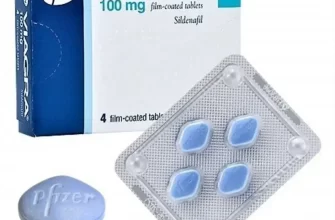Prednisone’s half-life in dogs varies considerably, typically ranging from 3 to 36 hours. This wide range depends on several factors, including the dog’s breed, age, liver and kidney function, and the specific formulation of the medication. Understanding this variability is crucial for accurate dosing and monitoring.
For example, smaller breeds often metabolize prednisone faster, resulting in a shorter half-life. Conversely, older dogs or those with impaired organ function may experience a longer half-life, requiring careful adjustment of dosage. Always consult your veterinarian to determine the appropriate dosage and schedule for your dog. They will take into account your dog’s individual characteristics to minimize adverse effects.
Monitoring your dog closely for signs of side effects, such as increased thirst, urination, or appetite changes, is also vital. Regular blood tests can help your veterinarian assess your dog’s response to prednisone and make necessary adjustments to the treatment plan. Early detection of potential problems allows for prompt intervention and prevents complications.
Remember, never adjust your dog’s medication without explicit instructions from your vet. Improper dosing can lead to serious health consequences. This information serves as a general guide; individualized veterinary care remains paramount for optimal treatment.
- Prednisone Half-Life in Dogs: A Comprehensive Guide
- Understanding Prednisone’s Half-Life in Canine Patients
- Factors Influencing Prednisone’s Half-Life
- Implications for Dosage and Monitoring
- Factors Influencing Prednisone’s Half-Life in Dogs
- Breed and Genetics
- Concurrent Medications
- Dosage and Administration Route
- Underlying Health Conditions
- Individual Variation
- Interpreting Prednisone Half-Life for Dosage Adjustments
- Common Misconceptions about Prednisone Half-Life in Dogs
- Monitoring Your Dog During Prednisone Treatment
- Weight Monitoring
- Observing for Side Effects
- Maintaining a Healthy Diet
- Keeping a Record
- Managing Potential Complications
- Communication with Your Veterinarian
- Medication Administration
- Emergency Preparedness
Prednisone Half-Life in Dogs: A Comprehensive Guide
The half-life of Prednisone in dogs varies, typically ranging from 3 to 4 hours. However, this is just the initial elimination phase. The drug’s metabolites have a much longer half-life, extending its overall effect.
Several factors influence Prednisone’s duration in a dog’s system. Liver and kidney function play crucial roles. Dogs with compromised organ health will experience a prolonged effect. Breed, age, and individual metabolism also contribute to variability.
This extended effect is why Prednisone’s administration often involves tapering the dosage. Sudden cessation can lead to withdrawal symptoms. Always follow your veterinarian’s instructions carefully regarding dosage and duration.
Here’s a table summarizing key factors affecting Prednisone half-life in dogs:
| Factor | Effect on Half-Life |
|---|---|
| Liver Function | Decreased liver function leads to longer half-life. |
| Kidney Function | Impaired kidney function extends the drug’s presence. |
| Age | Older dogs may metabolize Prednisone more slowly. |
| Breed | Breed-specific metabolic differences exist. |
| Dosage | Higher doses can influence the apparent half-life. |
Remember, this information serves as a general guideline. Always consult your veterinarian for accurate diagnosis, treatment, and monitoring of your dog’s Prednisone therapy. They can provide personalized guidance based on your dog’s specific needs and health status.
Understanding Prednisone’s Half-Life in Canine Patients
Prednisone’s half-life in dogs varies, typically ranging from 3 to 4 hours. However, this is just the initial elimination half-life. The drug’s metabolites, which are also active, have much longer half-lives, extending the overall duration of effect. This means your dog might experience Prednisone’s effects for considerably longer than just a few hours.
Factors Influencing Prednisone’s Half-Life
Several factors influence how quickly Prednisone leaves your dog’s system. Liver and kidney function play a significant role. Dogs with impaired organ function will metabolize and eliminate Prednisone more slowly, leading to a longer half-life and potentially increased risk of side effects. The dosage also matters; higher doses can sometimes alter the elimination rate. Breed, age, and overall health contribute as well. Always discuss your dog’s specific circumstances with your veterinarian.
Implications for Dosage and Monitoring
Understanding this variability is critical for proper dosage and monitoring. Your veterinarian will consider these factors when determining the appropriate Prednisone regimen for your dog. Regular bloodwork might be necessary to monitor for side effects, such as increased thirst or appetite, and to assess the drug’s efficacy. Closely observe your dog for any adverse reactions and report them immediately to your veterinarian. Consistent monitoring allows for adjustments to the dosage or treatment plan as needed, ensuring your dog receives the optimal care.
Factors Influencing Prednisone’s Half-Life in Dogs
Several factors significantly affect how long prednisone stays in a dog’s system. Age plays a crucial role; puppies and senior dogs often metabolize prednisone differently than adult dogs, leading to variations in half-life. Liver and kidney function are paramount; impaired organ health slows metabolism, extending the drug’s presence in the body. This can lead to increased risk of side effects.
Breed and Genetics
Genetic predisposition influences how a dog processes medications. Certain breeds may exhibit faster or slower metabolism of prednisone than others. This variability highlights the need for individualized treatment plans based on breed-specific characteristics.
Concurrent Medications
Administering other drugs alongside prednisone can significantly alter its half-life. Some medications may increase prednisone’s effectiveness and prolong its presence, while others might accelerate its breakdown. Always inform your veterinarian about all medications your dog is receiving to prevent potential drug interactions.
Dosage and Administration Route
Higher prednisone doses don’t necessarily lead to a proportionally longer half-life, but they might increase the likelihood of side effects. The method of administration–oral, injectable–can also slightly influence the speed of absorption and subsequent elimination, though this effect is typically less significant than other factors.
Underlying Health Conditions
Various health problems, such as liver disease, kidney disease, or even infections, can impact drug metabolism. These conditions often require dose adjustments and close monitoring to avoid complications. Your vet should always be aware of any existing health issues.
Individual Variation
Just like humans, individual dogs show variations in their metabolic processes. This inherent variability means that even with the same breed, age, and health status, one dog might process prednisone differently from another. Regular bloodwork can help your veterinarian track drug levels and adjust treatment as needed.
Interpreting Prednisone Half-Life for Dosage Adjustments
Prednisone’s half-life in dogs averages 3-4 hours, but this varies significantly based on factors like liver and kidney function, age, and drug interactions. This means that half the drug is eliminated from the body within that timeframe. Understanding this helps you manage your dog’s treatment.
Frequent dosing (every 12 hours or even more often) is usually necessary for maintaining consistent therapeutic levels. This minimizes peaks and valleys in blood concentration, leading to more stable and predictable effects. Your vet will carefully determine the appropriate frequency.
If your vet prescribes a once-daily dose, the medication’s longer duration of effect allows for better management of symptoms without as frequent administration. However, closely monitor your dog for any signs of either under- or over-medication.
Adjustments to the dosage and frequency usually depend on your dog’s response to the medication. Factors like appetite, activity levels, and symptom severity all provide valuable clues. Always discuss changes with your veterinarian, never adjust independently. They can use blood tests to confirm whether adjustments are necessary and to fine-tune the regimen.
Be aware that withdrawal of Prednisone needs to be gradual to prevent adrenal insufficiency. A rapid reduction can cause serious problems. Your veterinarian will outline a safe tapering schedule to minimize this risk.
Consistent monitoring and open communication with your veterinarian are crucial for successful Prednisone management in your canine companion.
Common Misconceptions about Prednisone Half-Life in Dogs
Don’t assume a single prednisone half-life applies to all dogs. Factors like age, liver and kidney function, and even breed significantly influence how quickly a dog metabolizes the drug. A vet will consider these individual factors when determining dosage and frequency.
The commonly cited half-life (around 3-4 hours) refers to the initial elimination phase. Complete clearance takes much longer, often 12-24 hours or more, leading to a prolonged effect. This means that even after the initial half-life, significant amounts of the drug might still be present in the dog’s system.
Many believe that once prednisone is stopped, its effects cease immediately. This is incorrect. Because of the extended clearance, symptoms can persist for several days, and withdrawal symptoms might even occur. Always follow your vet’s instructions for tapering the medication to avoid this.
Avoid relying on online calculators or general guidelines for determining prednisone half-life in your dog. Individual variability is considerable. Always consult your veterinarian for personalized advice regarding dosage, administration, and monitoring based on your dog’s specific health profile.
Misunderstanding the drug’s half-life can lead to incorrect dosages, potentially causing side effects ranging from mild to severe. Closely monitor your dog for any adverse reactions and report them to your vet immediately. Regular blood tests might be necessary during prolonged prednisone therapy. Accurate monitoring and communication with your vet are paramount.
Monitoring Your Dog During Prednisone Treatment
Schedule regular veterinary checkups. Your vet will monitor your dog’s progress and adjust the dosage as needed. These visits are crucial for managing potential side effects.
Weight Monitoring
Weigh your dog weekly. Prednisone can cause changes in appetite and weight. Consistent weight monitoring helps detect problems early. Report significant weight fluctuations to your veterinarian.
Observing for Side Effects
Closely monitor your dog for any unusual symptoms. Common side effects include increased thirst and urination, increased appetite, panting, changes in behavior, and skin infections.
- Increased thirst or urination: Note how frequently your dog drinks and urinates. Excessive thirst is called polydipsia, and excessive urination is called polyuria.
- Appetite changes: Track food intake. Significant increases or decreases warrant a vet visit.
- Behavioral changes: Observe any unusual aggression, anxiety, or lethargy.
- Skin changes: Check for redness, itching, or infections.
Maintaining a Healthy Diet
Maintain a consistent, balanced diet. Avoid significant changes to your dog’s food during Prednisone treatment unless directed by your vet. Provide fresh water at all times.
Keeping a Record
Keep a detailed record of your dog’s medication, weight, food intake, and any observed symptoms. This will be invaluable during vet visits.
Managing Potential Complications
Be aware of potential complications, including increased risk of infections and gastrointestinal upset. Report any signs of illness or discomfort to your veterinarian immediately.
Communication with Your Veterinarian
Don’t hesitate to contact your veterinarian if you have any concerns, no matter how small. Prompt communication is key to successful treatment.
Medication Administration
- Administer Prednisone as directed by your veterinarian.
- Never abruptly stop the medication; always follow your vet’s instructions for tapering the dosage.
Emergency Preparedness
Know the signs of a serious adverse reaction, such as difficulty breathing, seizures, or collapse. If you observe any of these, seek immediate veterinary attention.






